

(courtesy of Miss H. Lawrie)


I've been surrounded by blue and white china my whole life. Mum is a massive fan - the kitchen has always been packed with jugs, tureens, plates, dishes, and more, sometimes chipped but always loved. Thinking on it, it has been a massive influence on me, the idea that something utilitarian (a plate) can also have aesthetic value. This was drilled into me at an early age when I used to have to eat my food to see which Peter Rabbit plate I had. Then there's The Dining Room Shop - Mum's shop - which has always had gorgeous stuff - some really quite rare and beautiful (I've always liked the old Wedgwood, personally, especially the quite plain Jacobean (?) stuff). Nowadays it's a sort of collective term for knock-offs - usually transfers - of various other patterns. But Willow Pattern is named after an original Chinese design, first engraved by Thomas Minton in 1780. He was then followed by Royal Worcester, Spode, Adams, Wedgwood, the whole gang (Burgess and Leigh's modern Willow has been in continuous production since 1922).
There's a story behind the original pattern, and it's quite beautiful. Look at the plate first. It might look like a single image, but there's a whole narrative happening inside it.

Once upon a time, there was a very grand Mandarin (that's his palace under the big tree) who had a stunning daughter, Koong-se. She was so beautiful that he had knew he could do very well out of marrying her to the right person.
He also had a secretary, Chang. A personable young man who, while doing the Mandarin's acccounts, full head over heels with Koong-se, and she with him. It was proper love too. Not an infatuation but an all-consuming need. When he found out, the Mandarin was livid. How could this lowly secretary ever dream he was suitable for his daughter? Something had to be done.
Poor Chang was banished, and a huge fence was build around the gardens of the Mandarin's palace - you can see it at the bottom of the dish - so that Chang could not get in, and Koong-se was trapped inside, a bird in a gilded cage.
One day she was standing at the water's edge when she saw something in the water - a shell, with tiny little sails on it. She picked it out of the water and found inside a poem, and bead that she had given her lover. Chang was outside, and he still loved her.
But then - terrible news - the Mandarin came in to tell her that he had found a suitable match. Ta-jin, a powerful warrior Duke. Not only that, but he was on his way to meet his betrothed, with loads of jewels for her (that's him on the boat on the left hand side, making his way to the palace).
Chang had a plan though. Disguised as a servant, he snuck in to that night's banquet, and up to Koong-se's room. They kissed and decided to make a break for it. The Mandarin and Ta-Jin had drunk themselves into a stupor, and the two lovers quietly crept out. But just as they were leaving, the Mandarin woke up and tore after them (that's him chasing them over the bridge - she's holding jewels and I think the Mandarin has a whip).
They just managed to escape, and hid with a maid who the Magistrate had already fired for conspiring with the lovers. Koong-se had given the casket of jewels to Chang, so the Mandarin, who was also a magistrate, swore that he would use the jewels as a pretext to execute Chang as a thief when he caught him.
One night the Mandarin's spies reported that a man was hiding in a house by the river (on the plate it's just behind the boat) and the Mandarin's guards raided the house. But Chang had jumped into the ragging torrent and Koong-se thought that he had drowned.
Some days later the guards returned to search the house again. While Koong-se's maid talked to them, Chang came by boat to the window and took Koong-se away to safety.
They settled on a distant island, and over the years Chang became famous for his writings. This was to prove his undoing. The Mandarin heard about him and sent guards to destroy him. Chang was put to the sword and Koong-se set fire to the house while she was still inside.
The two birds on that plate? The gods, touched by their love, immortalised them as two beautiful doves.
.
There's another story to the plate - a secret Shaolin legend.The Shaolin Monastery is burned by the Imperial troops of the Manchu rulers, called invaders by Chinese nationalist and later communist factions. Souls of the dead monks take a boat to the isle of the Blest. On the bridge are three Buddha awaiting the dead souls: Sakyamuni, the Buddha of the Past; Maitreya, the Buddha of the Future; and, Amitabha, the Ruler of the Western Paradise. Beyond them is the City of Willows – Buddhist Heaven. The doves are the monks' souls on the journey from human to immortal life.
[I might get Mum to check this ;) - oh, and with all fables and legends, there's always another version, so apologies if this isn't the one you know]
 Click image to view large (recommended). By XKCD.
(ps - thanks for the spot Max!)
Click image to view large (recommended). By XKCD.
(ps - thanks for the spot Max!)
 Embrace is a low-cost infant incubator for use in developing countries. About 20 million low-birth-weight and premature babies are born every year around the world. Four million die annually, and one of the biggest problems these babies face is staying warm, because they don’t have enough fat on their bodies to regulate their body temperature. As a result, many babies die or grow up with severe lifelong health problems. Temperature regulation is the primary function of a traditional incubator, but incubators can cost up to $20,000. They require a constant supply of electricity, they’re difficult to operate and you’re not going to find them in rural areas where many of these babies are dying.
Embrace is a low-cost infant incubator for use in developing countries. About 20 million low-birth-weight and premature babies are born every year around the world. Four million die annually, and one of the biggest problems these babies face is staying warm, because they don’t have enough fat on their bodies to regulate their body temperature. As a result, many babies die or grow up with severe lifelong health problems. Temperature regulation is the primary function of a traditional incubator, but incubators can cost up to $20,000. They require a constant supply of electricity, they’re difficult to operate and you’re not going to find them in rural areas where many of these babies are dying.
Enter the Embrace Infant Warmer. It incorporates a phase change material — a wax-like substance — into a sleeping bag design. You heat this pouch of phase change material, and then once it’s melted, it’s able to maintain a constant temperature over the next 4 to 6 hours without the use of electricity. You place the pouch of phase change material in the sleeping bag, and it creates a warm microenvironment for the baby. They’ve gotten the cost down to less than one percent of the cost of a traditional incubator, and are currently in the process of testing the device. The whole team moved out to Bangalore about a year ago.
.
(Totally pinched from YMFY)
From the World Famous Design Junkies comes this work of genius, The Grand Taxonomy of Rap Names.

Boris is clearly missing a trick with his public information. We need better tube posters. Here are a few etiquette posters that appeared in the Tokyo subways between 1976 and 1982 (more at the original post, via Pink Tentacle). * * * * *
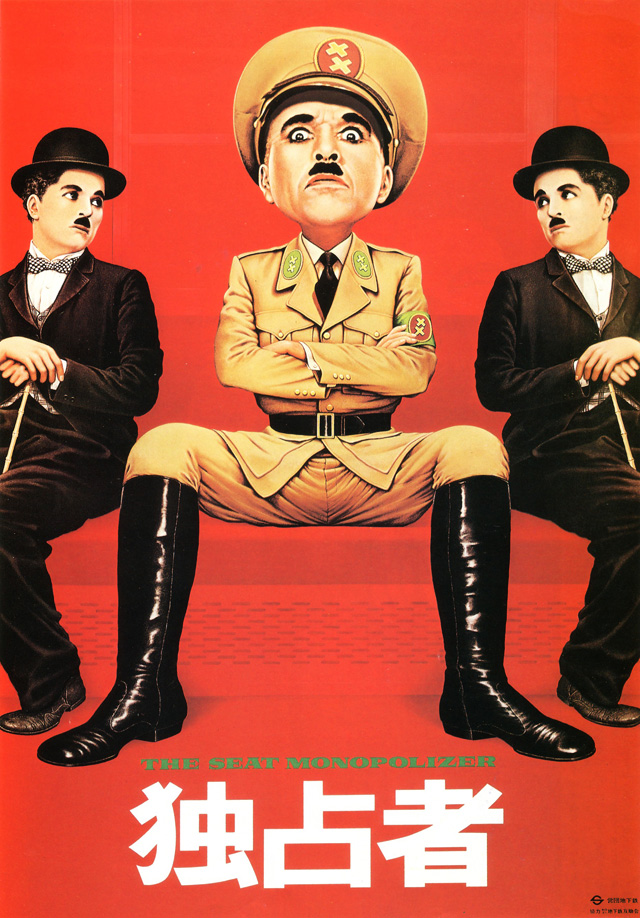 The Seat Monopolizer (July 1976)
The Seat Monopolizer (July 1976)
Inspired by Charlie Chaplin's "The Great Dictator," this poster tells passengers not to sit like idiots.
* * * * *
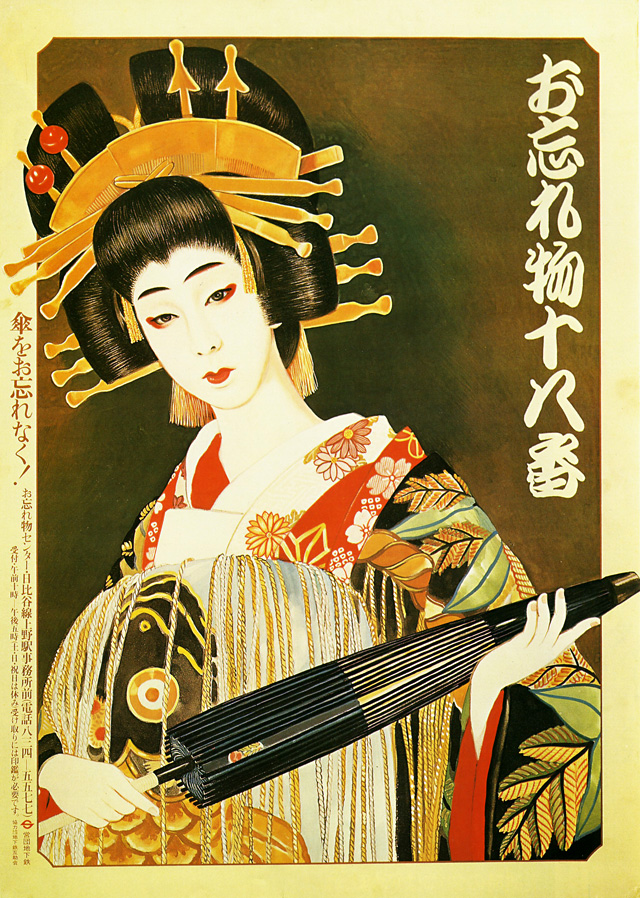 Don't forget your umbrella (June 1977)
Don't forget your umbrella (June 1977)
This poster of the high-class courtesan Agemaki (from the kabuki play "Sukeroku"), whose captivating beauty was said to make men forgetful, is meant to remind passengers to take their umbrellas when they leave the train.
* * * * *
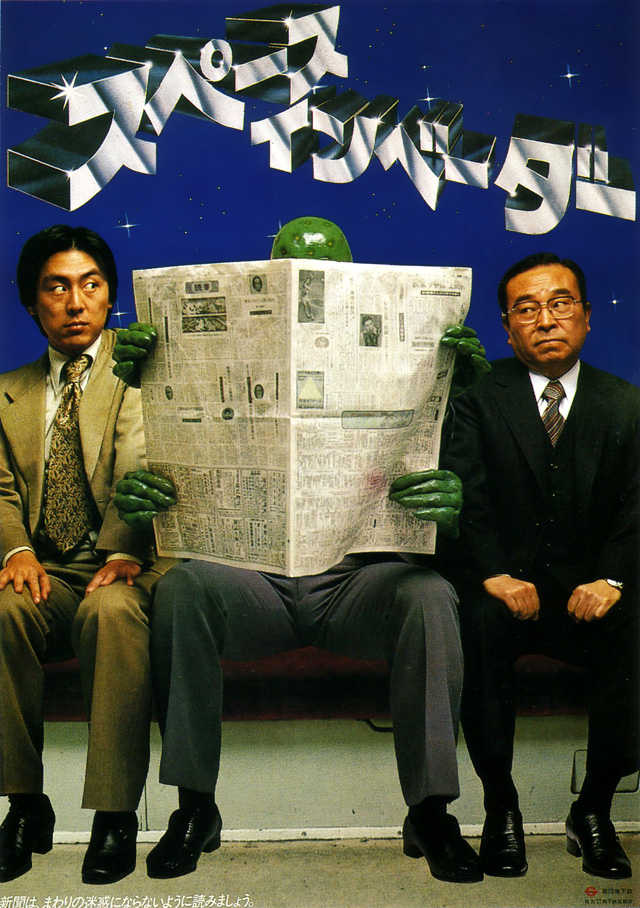 Space Invader (March 1979)
Space Invader (March 1979)
This 1979 poster has a fairly simply play on words. If you can't work it out, I can't help you.
* * * * *
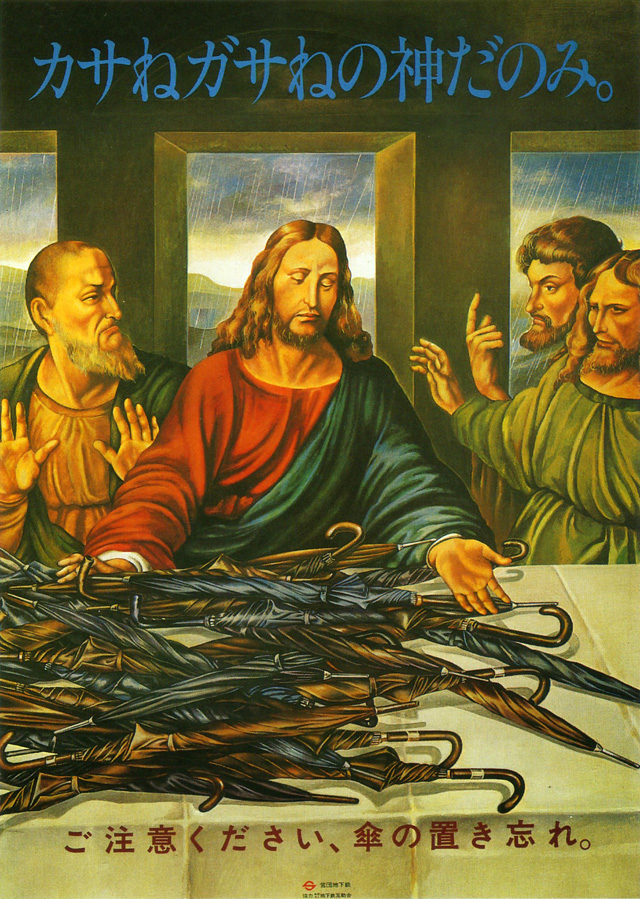 Don't forget your umbrella (October 1981)
Don't forget your umbrella (October 1981)
The text at the top of this poster reads "Kasane-gasane no kami-danomi" (lit. "Wishing to God again and again"). The poster makes a play on the words "kasa" (umbrella) and "kasane-gasane" (again and again). Doubting Thomas looks pretty freaky.
* * * * *
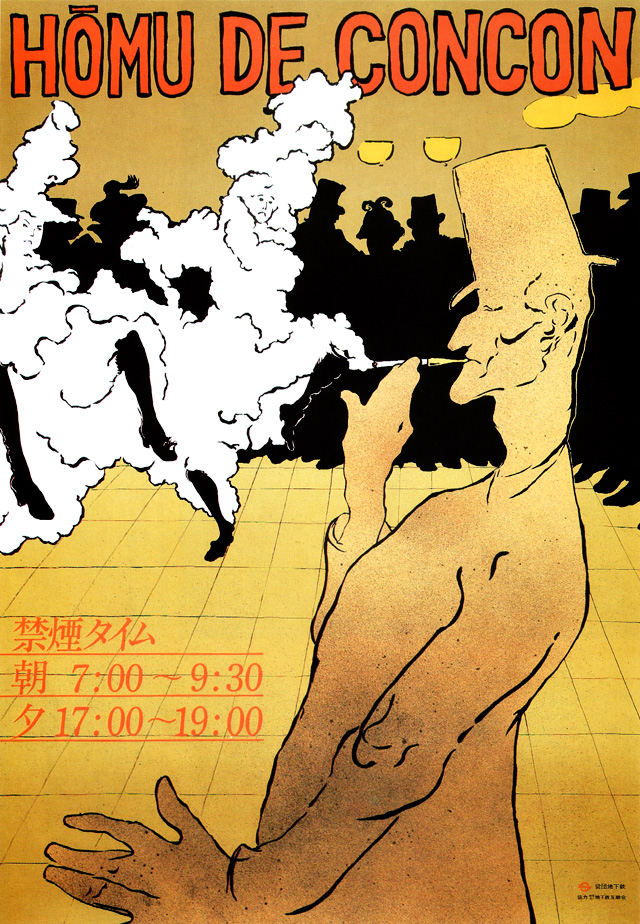 Coughing on the platform (January 1979)
Coughing on the platform (January 1979)
Modeled after the paintings of Henri de Toulouse-Lautrec, this poster -- titled "Hōmu de Concon" (coughing on the platform) -- urges people not to smoke on the train platforms during the designated non-smoking hours (7:00-9:30 AM and 5:00-7:00 PM). The poster makes a play on the words "concon" (coughing sound) and "cancan" (French chorus line dance).
* * * * *
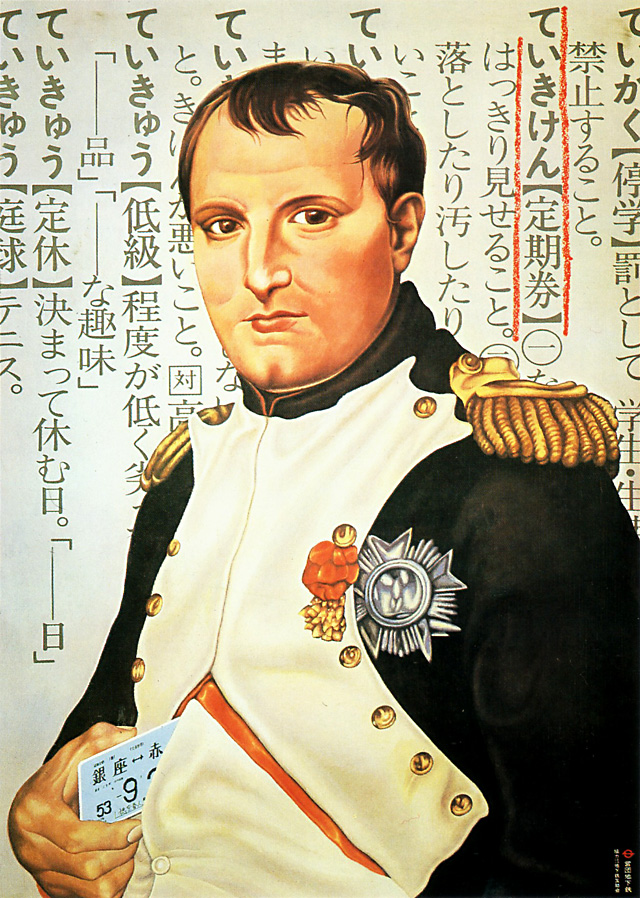 Clearly show your train pass (September 1978)
Clearly show your train pass (September 1978)
Napoleon's partially concealed train pass is meant to remind passengers to clearly show their train passes to the station attendant when passing through the gates. The dictionary page in the background is a reference to Napoleon's famous quote: "The word 'impossible' is not in my dictionary."
* * * * *
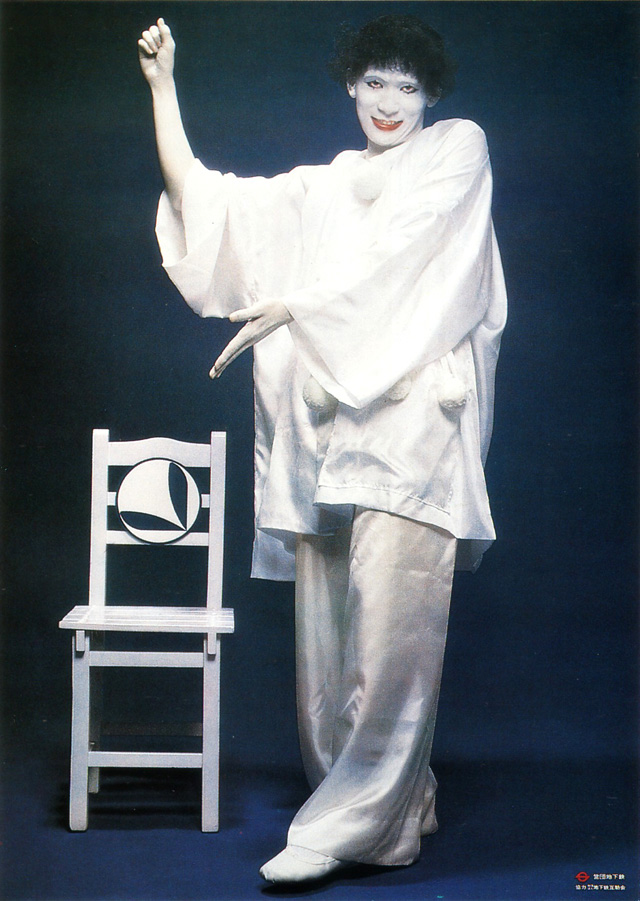 Marcel Marceau (October 1978)
Marcel Marceau (October 1978)
Marcel Marceau gestures toward a priority seat reserved for elderly and handicapped passengers, expecting mothers, and passengers accompanying small children. He makes me afraid of clowns.
 (Via)
(Via)

Via: Motorcycle Insurance
Jonathan Glancey interviews Norman Foster for the Guardian: Norman Foster at 75: Norman's conquests As the great British architect Norman Foster turns 75, he talks to Jonathan Glancey about flying cars, his new underground city – and how he beat bowel cancer
'The other day," says Norman Foster, "I was counting the number of aircraft I've flown: from sailplanes and a Spitfire to a Cessna Citation. By chance, it comes to 75." So Foster, who turned 75 this month, has decided to make models of all 75, to hang in his own personal museum, which he keeps at his Swiss home, an 18th-century chateau set in vineyards between Lausanne and Geneva.
These model aircraft will hover over his collection of some of the 20th-century's greatest machines, cherished for both their engineering brilliance and streamlined beauty; many of them look like winged or wheeled versions of Foster's most innovative buildings. "At the moment," says the architect, "I'm restoring a Citroën Sahara, designed to tackle north African dunes. I'm also thinking of getting a Bell 47 helicopter as a focal point. And I've had a model made of the Graf Zeppelin airship."
This last item puts me in mind of 30 St Mary Axe, aka the Gherkin, the Zeppelin-like London skyscraper that bears witness to Foster's passion for engineering marvels – a passion that began in childhood. Five years ago, I asked the architect if he had ever been a railway enthusiast. He replied by postcard, with a sketch of a Royal Scot class 4-6-0 thundering along, just as he would have seen it from his bedroom window, in the terraced house in Manchester where he grew up.
Foster has come a long way from those zinc-bath-in-front-of-the-fire days. The boy who left school at 16 to do his national service with the RAF is now – as his astronomical career shows, and as Deyan Sudjic writes in his new biography – "a phenomenon". But the lad from Levenshulme never forgot what he saw and learned as a working-class child brought up in an industrial Britain.
"There's a snobbery at work in architecture," says Foster, speaking at his riverside studio in Battersea, London. "The subject is too often treated as a fine art, delicately wrapped in mumbo-jumbo. In reality, it's an all-embracing discipline taking in science, art, maths, engineering, climate, nature, politics, economics. Every time I've flown an aircraft, or visited a steelworks, or watched a panel-beater at work, I've learned something new that can be applied to buildings. Disciplines connect, from locomotive engineering to the design of a bridge, or from a study of the way raptors and gliders soar. The most amazing lesson in aerodynamics I ever had was the day I climbed a thermal in a glider at the same time as an eagle. I witnessed, close up, effortlessness and lightness combined with strength, precision and determination. "
 Need some new stationery? Like grisly horror movies? Get it here. This is a great bit of work from Jacques Pense for 13th Street (Dutch horror/crime/thriller channel) at NBC Universal. I love the tear strip on the envelope and especially the staples eyes. Yuck!
Need some new stationery? Like grisly horror movies? Get it here. This is a great bit of work from Jacques Pense for 13th Street (Dutch horror/crime/thriller channel) at NBC Universal. I love the tear strip on the envelope and especially the staples eyes. Yuck!


(Via.)
 Sasha Prood has produced some beautiful pieces of illustration that explore typography through nature and watercolour. Really breathtaking. AND she has a website with some rather natty horizontal scrolling, which is something I've been wanting to try for ages.
Sasha Prood has produced some beautiful pieces of illustration that explore typography through nature and watercolour. Really breathtaking. AND she has a website with some rather natty horizontal scrolling, which is something I've been wanting to try for ages.
 You might recognise Josh Cooley's pen from his time at Pixar. For the last two years, he's spent his spare time working on his Lil' Inappropriate Book line. They've now been compiled into a book, and will be released alongside a rocking set of saucy playing cards. There are a few galleries dotted around. I want to buy one of the prints. There's a link here to some larger images, and a larger range (though smaller) on his blog. Click through and see if you can recognise the films...
You might recognise Josh Cooley's pen from his time at Pixar. For the last two years, he's spent his spare time working on his Lil' Inappropriate Book line. They've now been compiled into a book, and will be released alongside a rocking set of saucy playing cards. There are a few galleries dotted around. I want to buy one of the prints. There's a link here to some larger images, and a larger range (though smaller) on his blog. Click through and see if you can recognise the films...
 From this excellent page of silly infographics on B3TA.
From this excellent page of silly infographics on B3TA.